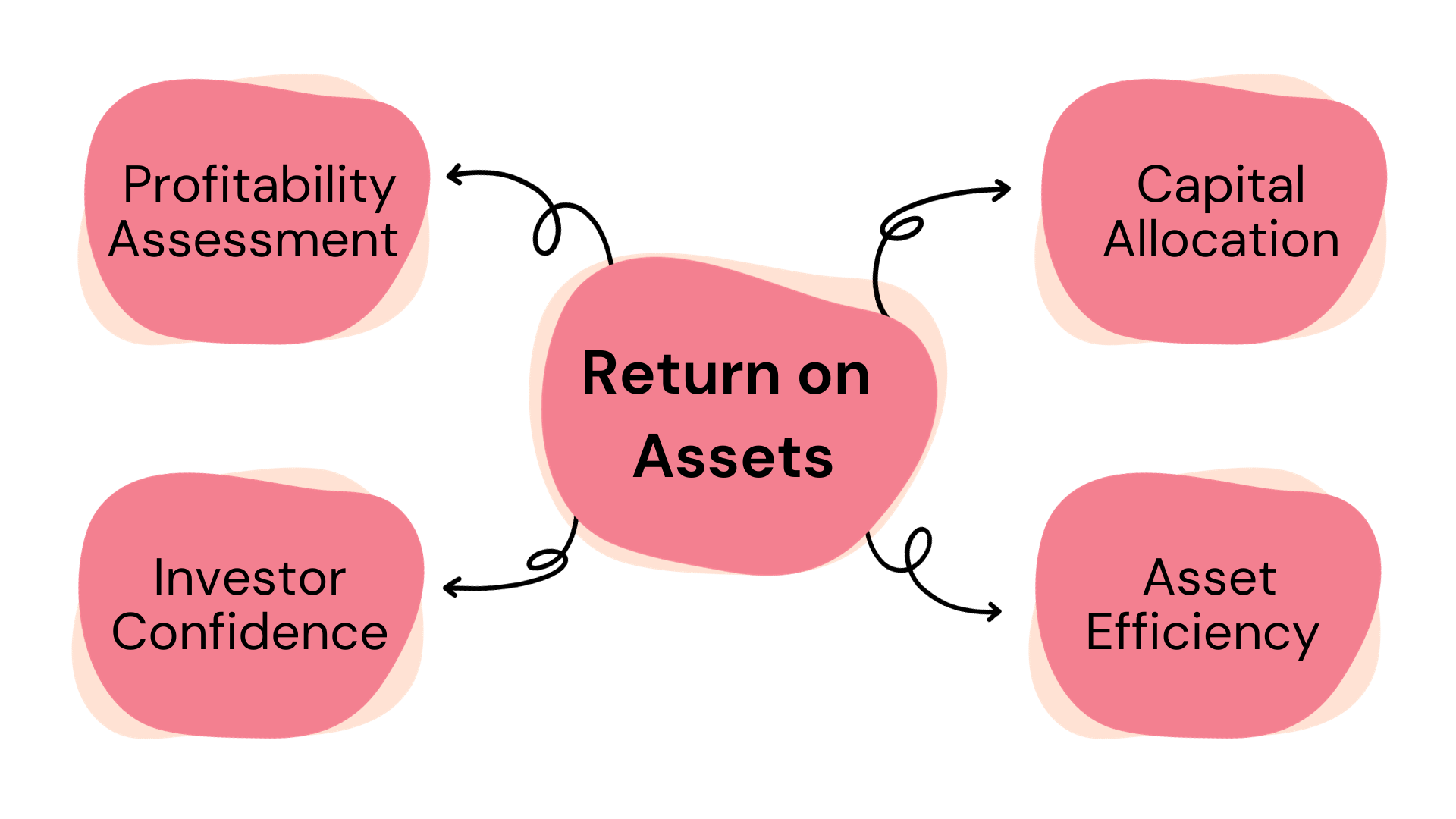Home » PSApedia
Return on Assets
Boost Return on Assets (ROA) with Proven Strategies and Enhance Profitability.

What Is Return on Assets (ROA)?
Return on Assets, commonly abbreviated as ROA, is a financial metric that indicates the profitability of a company in relation to its total assets. It measures how effectively a company is using its assets to generate earnings. Essentially, ROA tells stakeholders how much profit a company is generating for every dollar of assets it holds.
A higher ROA indicates better asset utilization and is generally seen as a positive sign of financial health and operational efficiency. Investors and analysts often use ROA to assess a company’s management performance and compare it to industry peers to make informed investment decisions.
Why ROA Is So Important?
Investors use ROA to assess a company’s ability to generate returns on investments, while it also serves as a performance benchmark for businesses in the same industry. Additionally, ROA helps company management identify areas for improvement in asset management and operational efficiency, making it a vital metric for strategic decision-making and financial health assessment. ROA is crucial for several reasons:
- Benchmarking: Companies can compare their ROA with competitors to gauge their relative efficiency in using assets.
- Asset Utilization: It provides insight into how well a company is deploying its assets to generate profits.
- Investment Decisions: Investors consider ROA as a critical metric in determining the financial health of a potential investment.
Understanding the efficiency of asset utilization can lead to better financial management strategies.

Why ROA Is So Important?
Calculating ROA
The formula to calculate ROA is:
ROA = Net Income / Average Total Assets
For instance, if a company has a net income of $100,000 and average total assets of $500,000, the ROA would be:
ROA = $100,000 / $500,000 = 0.2 or 20%
This means that the company generates a return of 20 cents for every dollar of assets it owns.
ROA vs Other Financial Metrics
ROA is distinct from other metrics such as Return on Equity (ROE) or Return on Investment (ROI). While ROA focuses on the profitability against total assets, ROE considers the shareholders equity, and ROI looks at the return on a specific investment.
Incorporating tools like project management software can help firms optimize asset utilization and improve ROA figures.
| Metric | Formula | Purpose |
|---|---|---|
| Return on Assets (ROA) | Net Income / Total Assets | Measures how efficiently assets generate profit. |
| Return on Equity (ROE) | Net Income / Shareholders’ Equity | Indicates the return on shareholders’ investment. |
| Earnings Per Share (EPS) | Net Income / Total Outstanding Shares | Measures profitability per share. |
| Price-to-Earnings (P/E) | Stock Price / Earnings Per Share (EPS) | Evaluates the stock’s valuation relative to earnings. |
| Debt-to-Equity Ratio | Total Debt / Shareholders’ Equity | Assesses the company’s leverage and financial risk. |
| Current Ratio | Current Assets / Current Liabilities | Measures short-term liquidity and solvency. |
| Gross Profit Margin | (Gross Profit / Revenue) * 100 | Indicates profitability after the cost of goods sold. |
| Operating Margin | (Operating Income / Revenue) * 100 | Evaluates operating efficiency and profitability. |
How Is ROA Used?
Companies utilize ROA in various ways:
- Performance Analysis: To assess operational efficiency over time.
- Strategic Planning: To identify areas that need resource allocation or process improvement.
- Investor Relations: To showcase the company’s health and profitability to potential investors.
With the increasing complexity of financial analytics in PSA, understanding metrics like ROA becomes even more critical.
Ready to Optimize Your ROA?
To truly harness the power of ROA and other key metrics, businesses need robust tools and platforms that provide insightful analytics. KEBS, a Professional Service Automation (PSA) software, can be your partner in achieving this.
By leveraging features such as KEBS finance management tools, businesses can gain a clearer picture of their assets and their efficiency. Moreover, understanding the nuances of resource management and effective project management can further drive optimal asset utilization and, in turn, a healthier ROA.

KEBS Finance Management
Ready to Optimize Your ROA? Dive deeper into KEBS and explore how it can transform your financial metrics. Get started by booking a demo or contacting us for personalized guidance



